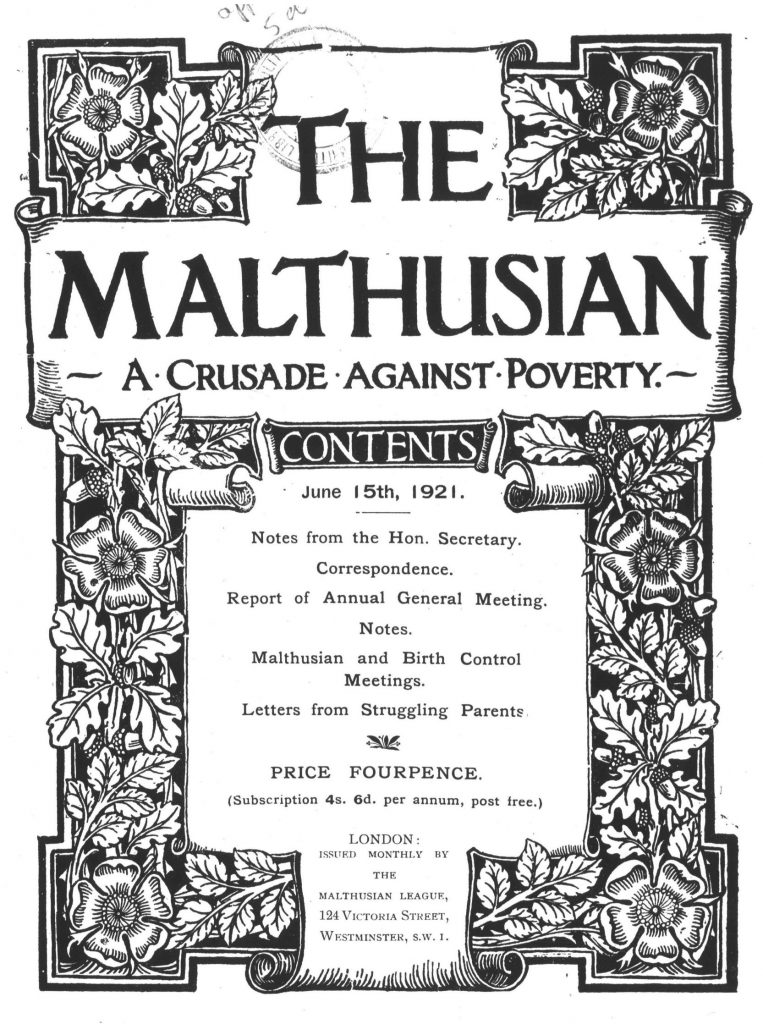
The greatest boon to … poor people is to be told how to limit the number of their children.
Annie Besant, founder of The Malthusian
Overpopulation was a huge social problem in 19th century Britain. Poor families in both the cities and country lived in crowded, unhealthy homes, struggling to feed their large families and living lives of disease, starvation and misery. Trailblazers like Annie Besant fought a ‘crusade against poverty’, promoting birth control methods as a way of reducing family size and overcrowding, giving the poor a better life.
State Library Victoria members can access hundreds of databases from home (if your home is in Victoria). That’s millions of articles, magazines, archives, ebooks, videos, songs, audiobooks and more, available through the catalogue anytime. We’re taking a closer look at new and/or interesting databases as well as hidden gems from our collections. Read on for top picks and tips from Librarians.
Not a member yet? Sign up online first and reward your curiosity.
Today we’re looking at The Malthusian, one of the fifteen collections in the Women’s Studies Archive.
What makes this database so great?
The Malthusian was published by the Malthusian League to push for change to improve the appalling living conditions of the poor. The League focused on educating the poor about birth control, lecturing and publishing numerous books and pamphlets on the subject. In the 19th century, this was new territory and opposed by many. The journal gives us a vivid window into the living conditions of the poor, the arguments for and against population control and statistics on population growth in different countries. It also offers a fascinating insight into the population issues from 1879 to 1921, which laid the groundwork for social reform in the twentieth century.

Overpopulation in 19th century Britain was one of the most pressing problems of the time. In his 1798 book, An essay on the principle of population, economist Thomas Robert Malthus (1766-1834) wrote that an increase in a nation’s food production improved the well-being of the population, but also led to population growth. The result was hardship, want and greater susceptibility to famine and disease among the lower classes.
Malthus’ ideas were influential, focusing attention on the birth and marriage rates in the following decades.

In 1877, Annie Besant and Charles Bradlaugh published Charles Knowlton’s pamphlet, The fruits of philosophy.1 It advocated birth control for married couples and was banned under obscenity laws in both the United States and the United Kingdom. Besant and Bradlaugh published the pamphlet in the UK as a challenge to the obscenity laws. The case was dismissed, but created huge publicity for the issue of contraception. Annie Besant became a tireless campaigner for the improvement of living conditions, birth control, and women’s rights. She visited Melbourne and other Australian cities in 1894 as part of a public lectures series. (Argus, 1894)
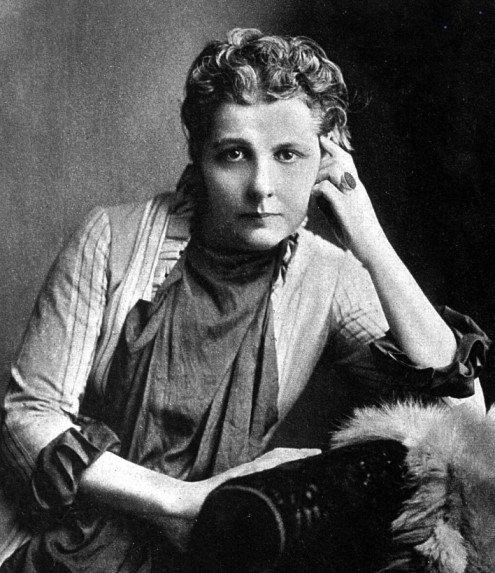
In 1877 Besant wrote her essay The law of population which she dedicated to ‘the poor in great cities and agricultural districts, dwellers in stifling court or crowded hovel, in the hope that it may point out a path from poverty, and may make easier the life of British mothers.’ 2
In 1879, Besant and Bradlaugh founded the Malthusian League. Its aim was ‘to agitate for the abolition of all penalties on the public discussion of the “Population Question”. They believed that overpopulation was the biggest cause of poverty. Controversially, they sought to educate the poor in birth control methods, to reduce family size as a means of improving living conditions and their health. With fewer children, parents could feed them properly and make them comfortable and happy, rather than see them suffer an early death from rickets, fevers and consumption. (The Malthusian, July 1883, p 427)
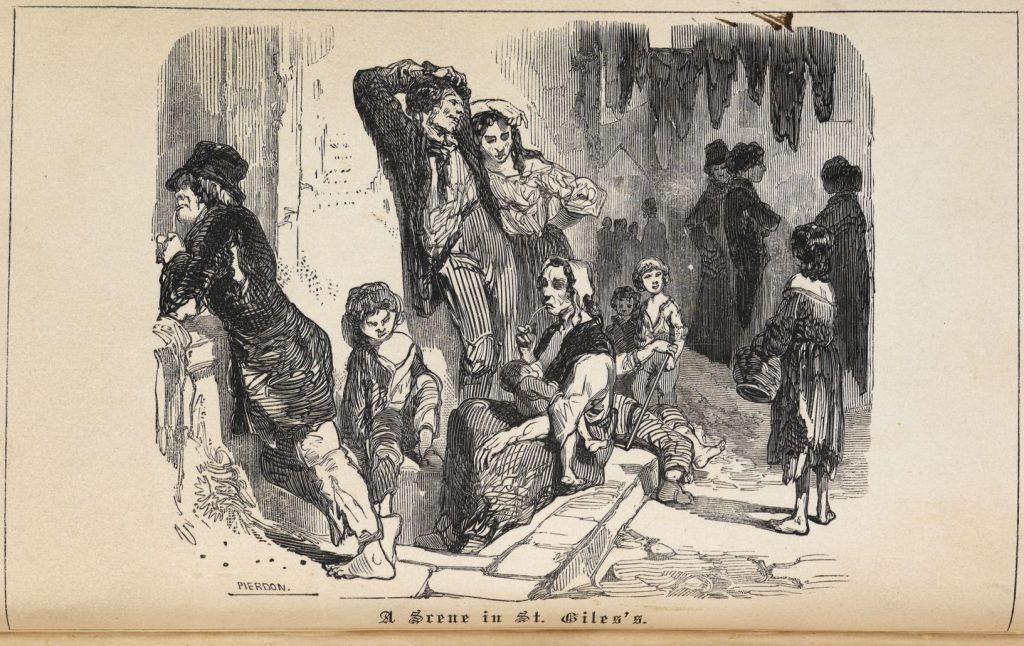
The journal highlights the appalling living conditions created by overcrowding in London.3 One issue describes the occupants of one cellar in a tenement house – a father, a mother, three children and four pigs. In another room, a woman was recovering from her eighth pregnancy, her husband ill with smallpox and the children running around, covered in dirt. Seven people were living in one underground kitchen. In another room, nine brothers and sisters, the eldest aged 29, lived in one room. In these conditions, prostitution thrived and children often turned to theft to ward off starvation. (The Malthusian, December, 1883)
Another issue quotes a sobering statistic4: the death rate for children of the rich in the first year of life was 8%, compared with 30% for the children of the poor in the slums. (The Malthusian, June 1883)
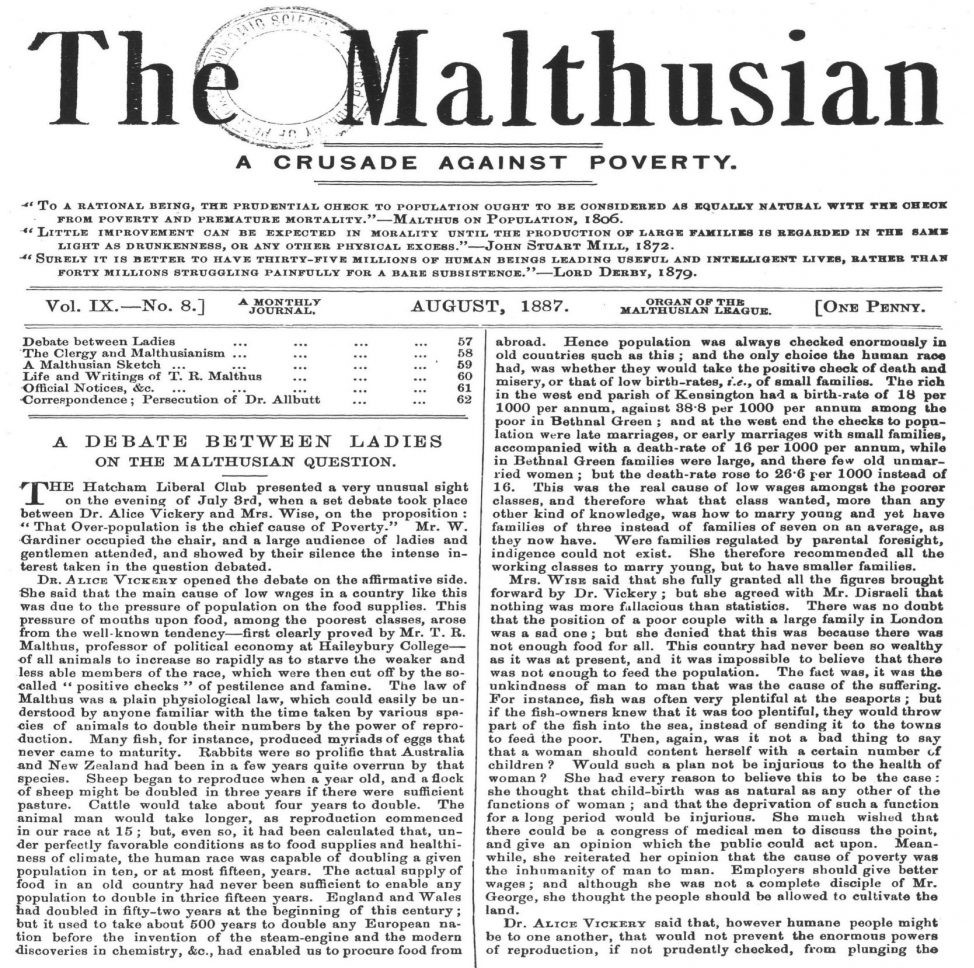

Not everyone was swayed by the plight of the poor. Charles Richet in France argued that the prosperity of a nation was determined by the density of its population. He conceded that smaller families would lead to greater morality and cleanliness, with less misery, fewer slums and fewer haggard and starving faces. However, he argued that a greater population would lead to greater military strength for France. He maintained that the nation needed the poor, to maintain the nation’s population levels and very existence. (The Malthusian, August, 1883)
The concept of voluntary limitation of family size was radical for the time and raised passionate opposition from many quarters.5 In 1886, Dr H. Arthur Allbutt, a Leeds physician, published a book, The wife’s handbook.6 Priced at sixpence, (a cost the poor could afford) it offered information on pregnancy and delivery with a chapter on contraception. Dr Allbutt was struck from the register of the Royal College of Physicians in 1887 for having breached professional conduct, although his other qualifications entitled him to practise medicine. Concern was expressed that birth control information could corrupt the morals of lower class youth. A letter to the Leeds Daily News, published in The Malthusian (February, 1896) responded: ‘The heinous offence is that all this information is sold for sixpence…if Dr Allbutt had published his “Wife’s handbook” at ten shillings, he might now have been practising with the full approval of the Medical Council.’
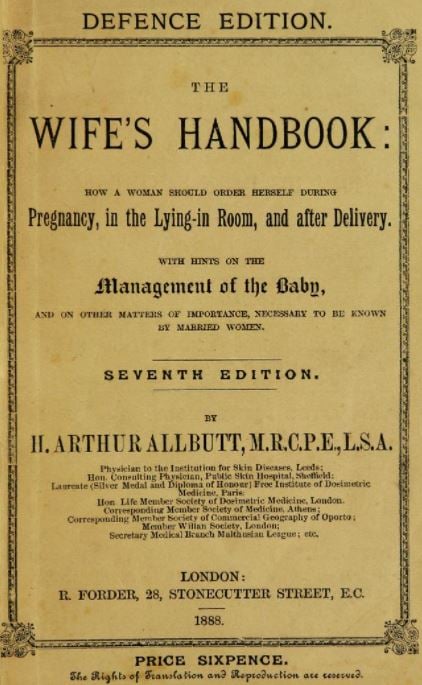
By 1921, the last year of The Malthusian‘s publication, knowledge of contraceptive methods was almost universal (The Malthusian, August, 1921). There was no evidence of excess population in Britain, but overcrowding still occurred in the cities. With the memory of World War I fresh in everyone’s minds, there were still fears that a lower population made a nation vulnerable to its enemies. Views on birth control varied, revealing it as an ongoing issue. In November 1921, the Malthusian League opened a Maternity and Child Welfare Centre in Walworth, London, providing birth control information to mothers. By this time, other advocates, including Marie Stopes, had joined the efforts to limit family size among the working classes.
You can read more on the population question in The Malthusian in the Women’s Studies Archive. There are also 14 other collections to explore in this database.
We always welcome your recommendations for database trials – let us know what you’d like to see. Have a research query or questions on how to use our online collections? Ask a Librarian.
Further reading
August, A, 1999, Poor women’s lives: gender, work, and poverty in late-Victorian London, Fairleigh Dickinson University Press, Madison, New Jersey, & Associated University Presses, London
Besant, A, 1879?, Marriage, as it was, as it is, and as it should be: a plea for reform, Freethought Pub. Co., London (Available on the Gale Primary Sources: Nineteenth century collections online database to Victorian members of the State Library)
Chandrasekhar, S, 1981, “A dirty filthy book” : the writings of Charles Knowlton and Annie Besant on reproductive physiology and birth control and an account of the Bradlaugh-Besant trial : with the definitive texts of Fruits of philosophy, by Charles Knowlton, The law of population, by Annie Besant, Theosophy and the law of population, by Annie Besant, University of California Press, Berkeley
D’Arcy, F, 1977, ‘The Malthusian League and the resistance to birth control propaganda in late Victorian Britain’, Population Studies, vol 31, no 3, pp 429–448 (Available on the JSTOR database to Victorian members of the State Library)
Malthus, T, An essay on the principle of population (State Library Victoria a number of editions)
Mayhew, RJ, 2014, Malthus: the life and legacies of an untimely prophet, The Belknap Press of Harvard University Press, Cambridge, Massachusetts. (Available as an ebook to Victorian members of the State Library)
Mearns, A, 1883, The bitter cry of outcast London: an inquiry into the condition of the abject poor (Available on the Gale Primary Sources: Nineteenth century collections online database to Victorian members of the State Library)
Meek, C & Nunez-Eddy, C, 1832, The Fruits of Philosophy, by Charles Knowlton. Embryo Project Encyclopedia (2017-10-05). ISSN: 1940-5030
Footnotes
- The pamphlet was originally published in 1832 in the United States
- Besant, A, 1877, The Law of population: its consequences, and its bearing upon human conduct and morals, Freethought Publishing Company, London
- France alone among European nations had smaller family sizes, leading to lower population growth. The general birth rate for France was low at three births per marriage. Dr. C.R. Drysdale lauded the ‘parental restraint’ in France and its benefits to human welfare. This contrasted sharply with Germany, Italy and Britain: Germany added half a million children a year to her ‘already dismally overcrowded state’, while Britain added 400,000 per year. Germany, he said, was far advanced in knowledge of chemistry and physics, but a century behind France in her knowledge of ‘parental prudence.’ (The Malthusian, September, 1896)
- Provided by political economist John Stuart Mill
- A furious anti-Malthusian letter to the editor of The Echo, a London newspaper, was published in the June 1883 issue of The Malthusian. The writer, Edward L. Garbett, wrote that he held ‘the superstition of Malthus’ to be the ‘most infernally false and mischievous that ever cursed any country…As Professor Newman says, nothing is more important to our nation, and to civilization, than that these under-peopled islands should, at the opening of next century, rather contain eighty millions rather than only forty’.
- Allbutt, H A, 1888, The wife’s handbook: how a woman should order herself in pregnancy, in the lying-in room, and after delivery, with hints on management of the baby, and on other matters of importance, necessary to be known by married women, 7th edn, R Forder, London

